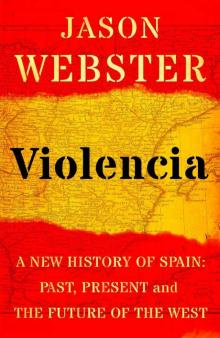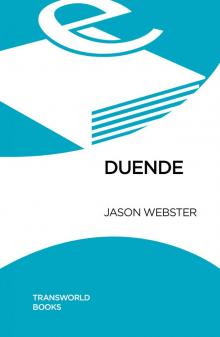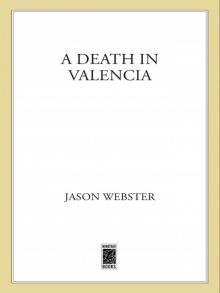- Home
- Jason Webster
Violencia Page 7
Violencia Read online
Page 7
Yet this very usefulness can also cause problems. Because it fits so well, ‘Moorish Spain’ is generally seen somehow as an entity, as a single, coherent whole, clearly delineated, as though a pair of brackets could be put around it to isolate it from the rest of the country’s past. Older books on Spanish history (particularly ones written by Spaniards) often deal with the Moorish period in a single chapter, treating it as a curious anomaly, a pause before normal Christian service resumed with the completion of the ‘Reconquest’ in 1492.
Generally speaking – and there are exceptions – this is how many Spaniards think of it today. Yes, the Moors were around for many centuries, and yes, they left behind a not insignificant legacy (the Alhambra in Granada, for example), but it was all a very long time ago and mostly concentrated in the south, in today’s Andalusia. This same Spaniard will be able to name the country’s cultural giants, such as Cervantes (hombre, ¡por supuesto!) and Picasso, but will almost certainly give a blank stare when told that the first novel in European history was written four hundred years before Cervantes by a man from Guadix (Ibn Tufayl), that the most authoritative medieval map of the world was compiled by a Ceutan (Al-Idrisi), or that arguably the most influential Spaniard who ever lived was born in twelfth-century Cordoba (Averroes). These people, and many, many others from the Moorish period, have been all but airbrushed from the national story. Lack of awareness of how deep the Moorish influence still runs in Spanish life is the norm. As with the Romans, a ‘pact of forgetting’ has been followed to disassociate ‘Spain’ from much of its rich historical heritage in an attempt to find a common national identity.
But the Moorish period is too long and important simply to be ignored entirely. Following Napoleon’s invasion of Egypt, Europeans as a whole became increasingly interested in the Middle East, and nineteenth-century travellers to Spain saw echoes there of the rich cultures they were beginning to discover at the eastern end of the Mediterranean. Spain’s Moorish past became an integral part of the country’s exoticism, seen, for example, in Washington Irving’s Tales of the Alhambra (and rooms where the American writer stayed at the then crumbling old palace form part of the modern visit around the highly restored structure of today).
The Spanish themselves, however, remained less enamoured of their Moorish past. Following the war with the US in 1898 and the loss of the country’s last colonies (Cuba, Puerto Rico and the Philippines) Spain fell into a moral slump known as el Desastre, with much navel-gazing on how from being the world’s most powerful nation they had fallen so far behind. A scapegoat was needed, and so the Moorish period – the one thing which clearly differentiated Spain from the rest of Europe – was dragged out for a beating. Much of the country’s perceived backwardness was laid at its door, and a movement even began to eschew Spanish words of Arabic origin in favour of Latin-based counterparts, further attempting to eradicate an unwanted period of history, as though it could somehow be made to disappear altogether.
This in turn brought about something of a reaction, in which the Moorish past became more celebrated and its cultural and scientific achievements – far in advance of the rest of medieval Europe – were highlighted for the first time. But the debate shifted from understanding and correctly interpreting a crucial period in the country’s past to become part of the perpetual debate about what Spain and Spanishness actually is. Was the Moorish period generally ‘good’, or ‘bad’? One view still sees the Moors as an essentially foreign invasion force which, in turn, ‘the Spanish’ eventually pushed out; the other views them as having been so integrated into the local population that the very idea that the Moors invaded in the first place has been challenged. According to this theory, Spain was culturally absorbed into the Islamic world in a much more peaceful fashion, and the invasion and conquest narrative was fashioned centuries later to justify the ‘Reconquest’.
What the various interpretations boil down to is the question of identity: are the Moors ‘Spanish’ or ‘foreign’? If seen as ‘us’ they are viewed with sympathetic eyes. If ‘them’ then, generally, the opposite.
All of this has greater emphasis today given the more intense relations between the Western and Islamic worlds. There are a million Muslims living in Spain today, mostly concentrated in and around large cities. Terrorist attacks carried out in the name of specific interpretations of Islam have left scars, with an ever-present threat of more to come. How Spain views its Moorish past is directly relevant to how it manages its relations with Muslim communities living in the country today. An enormous precedent exists in its own history waiting to be examined – a period marked by spectacular cultural achievements, but also by the worst intercommunal violence.
The lessons are there to be found. But can they be learned?
WHAT’S IN A NAME?
For the Greeks it had been Iberia. For the Romans and Visigoths, it was Hispania, and Spania for the brief Byzantine interlude in the south. But then Muslims invaded in 711 and named the Peninsula Al-Andalus, which bears no relation to any previous names. Why?
In 711, Islam was still less than a hundred years old. The death of the Prophet Muhammad in 632 had heralded the beginning of a period of military expansion out of Arabia in which Muslim armies very quickly pushed north-east to conquer the old Sassanian Empire, northwards into Byzantine territories of the Levant, and north-west across the Sinai and into Africa. Victories came rapidly, a wave of conquests the like of which hadn’t been seen since Alexander the Great. Aware of their ‘difference’ from the peoples they defeated – possibly through a combination of their faith, traditions and race – Muslims often (but not always) founded new cities rather than settling in old ones, establishing, for example, Kufa and Cairo. Giving their conquered territories new names followed a similar pattern, so Mesopotamia became ‘Al-Iraq’, and Egypt ‘Al-Misr’. Spreading ever westwards, the Muslim forces reached the end of the North African coast, naming the land they found there ‘Al-Maghreb’, ‘the western area’ (hence ‘Morocco’). Gazing across the Strait of Gibraltar towards the Spanish Peninsula, they likely followed their now established pattern of coming up with their own name for it.
Within 100 years of the Prophet Muhammad’s death in 632, the Islamic Empire stretched from the Himalayas to the Iberian Peninsula
But where does ‘Al-Andalus’ come from?
The short answer is that no one really knows. There are several theories, nonetheless.
For a long time the accepted version was that ‘Al-Andalus’ was a mispronunciation of ‘Vandals’. According to this idea, somewhere around modern Tunisia the spreading Muslim armies came across the descendants of the Vandals, who, in some après-battle fraternisation, described how they had originally crossed over into North Africa from Spain centuries before. The image stuck, and when the Muslims arrived at the Strait of Gibraltar a few years later and glanced northwards, they remembered the Vandals’ story and named the land on the other side after them.
That the Vandals had been in Spain for only a few decades back in the early fifth century – three hundred years before – might raise doubts about this theory. And while not impossible, it has its detractors. So others have been suggested.
One is that the Muslims decided to name Spain after a system of land distribution used by the Visigoths, who parcelled their country up by ‘lots’. So landalauhts – ‘the place where land is distributed by lots’ – became ‘Al-Andalus’ . . . The idea that Muslims were so stretched to come up with a new name that they had to seek inspiration in local land distribution methods makes little intuitive sense. So let’s move on.
A third theory suggests that Al-Andalus was derived from ‘Atlantis’. Which may not be as crazy as it first sounds. A suggested origin for the Islamic name ‘Iraq’ (or ‘El-Iraq’ in Arabic) is that it came from Uruk, the ancient Sumerian city (possibly the first true city in the world) founded around 4500 BC and one-time home of King Gilgamesh, hero of the eponymous Babylonian epic. For a largely oral culture, which Islam was i
n the seventh and early eighth centuries, myth and legend would have figured greatly in Arab imagination. And just as tales of ancient Uruk would have been part of the storytelling tradition, so were accounts of a mythical city in the far western Mediterranean: Atlantis was named in pre-Islamic Arabian poetry, and Plato made it clear that it lay beyond the Pillars of Hercules – today’s Strait of Gibraltar. Arriving there, it may well have made complete sense from their own storytelling tradition for Muslim soldiers to associate Spain with the Atlantis tales. Only they mispronounced it, turning it into ‘Al-Andalus’.
The problem with this theory is that so much guff has been written about Atlantis in general that even mention of the name can cause a rolling of the eyes. The point is, however, to try to think like Muslims in the eighth century. For them, the existence of Atlantis, and its position at the far end of the Mediterranean, may have been taken very seriously indeed.
Which brings us to the most recent theory about Al-Andalus and its origins. According to this idea, it comes from the original, pre-Moorish name for the Tarifa peninsula, right at the southern tip of the Spanish mainland. Landing there in 711 and adopting it, the Muslim forces used the same denomination for the entire Peninsula, as far as the Pyrenees, as they pushed further north and defeated the Visigoths. According to this idea, the original name was pre-Indo-European, coming from some indigenous people who were possibly related to the Basques . . .
This raises the question: why name a place only after you’ve invaded it? Surely those same Muslims looking longingly across the Strait had come up with something before they boarded their landing vessels?
As mentioned at the start, the origins of ‘Al-Andalus’ are anything but clear. For the time being, however, my money’s on Atlantis.
CIVIL CONFLICT IN AL-ANDALUS
We shall come to the cultural achievements of Moorish Spain, to how scientifically and artistically it shone a light in Europe, providing an intellectual foundation from which the Renaissance could eventually emerge. But if there is one thing which characterises the Moorish period as a whole, it is internal conflict and warfare. As with all other civilisations throughout Spanish history, the dominant theme was violent struggle against itself. Not for being ‘Moorish’ was it any different in this regard, and as such it followed a set pattern which the Visigoths – the creators of the first political Spain – would have recognised.
In fact, Al-Andalus was divided against itself from the very beginning of its existence. After a few raids on the southern Spanish coast in 710, the full invasion was launched in 711 under a commander called Tariq. The chronicles tell how his force landed at Gibraltar, still known then by its old Greek name, Calpe. Following a custom of renaming places they conquered, the Muslims called the Rock after their leader: Jabal Tariq, the ‘Mountain of Tariq’ morphed centuries later into ‘Gibraltar’. Tariq and his army had great initial success on the Peninsula. An Arab chronicler tells how he sowed terror among the local inhabitants by capturing some of them, chopping them up and boiling their remains. Other captives were set free and quickly spread word about the horrors of the new invaders.1 Having done this, Tariq then defeated King Roderic in battle and moved swiftly towards the heart of the country, the Visigothic capital, Toledo.
Meanwhile, back on the southern side of the Strait, the Muslim governor – the man who had sent Tariq out in the first place – was becoming jealous of his commander’s increasing glory. So he gathered his own army and launched a second invasion of the Peninsula. Driven, as most of the early conquests of the Islamic Empire were, by religious fervour combined with lust for booty, both men were keen to get rich, and the most sought-after object for both was King Solomon’s Table. The belief was that after many adventures this treasure had crossed the old Roman Empire in the wake of the Jewish Diaspora, eventually ending up in Visigothic Hispania. Tariq found the table first, in a castle not far from Toledo. But he knew that Musa, his superior, would claim it for himself. When the two men met, having already conquered great swathes of the Peninsula between them, this is precisely what happened. But Tariq had previously cut off one of the table’s legs, encrusted with gold and jewels, and had it replaced. In time, both men were recalled to the Islamic capital at Damascus to report on their conquest. In an attempt to ingratiate himself with the caliph, Musa presented him with Solomon’s Table, claiming to have found it himself. At which point Tariq pulled out the original leg he had sawn off, proving that he had got it first.
The story may seem petty, even childish, but it holds important elements which would characterise the many centuries of Moorish rule now beginning in Spain: division, rivalry, lack of singular purpose, and squabbling. In the end they would cause the very downfall of Al-Andalus.
Unlike the Roman or Visigothic invasions of the Peninsula, which had taken two hundred years apiece, the Moorish conquest was achieved in about a decade. The Pyrenees initially provided little protection for southern France, and the Muslim forces carried on into Visigothic Septimania (capital, Narbonne) and up towards the Loire. It was only here, in 732, that they were stopped by the army of Charles Martel, the Battle of Poitiers marking the furthest extent of Muslim penetration into north-western Europe. From this point on, Moorish energies would largely be concentrated in the Iberian Peninsula.
Immediately, however, civil conflict within Muslim-held areas began. The armies that had crossed with Tariq and Musa were largely Berber in origin. Having been conquered themselves by Muslims only shortly before, the Berbers had converted to Islam but felt poorly treated by the Arab elite controlling the Islamic Empire. There were many grievances over distribution of booty and land. As early as 739 this anger came to a head in the shape of a Berber revolt in Morocco which spread over to Al-Andalus. This racial divide was exacerbated by long-standing inter-Arab disputes between Yemenis and Qaysis, splitting Moorish Spain along tribal lines. Less than twenty years after the initial invasion, and ten years after completing the conquest of the Peninsula, Al-Andalus was at war with itself.
The conflict seriously destabilised the new province of the Islamic Empire, and might well have led to its early demise. But instead, a curious development ensued, one which probably secured Moorish civilisation in the Peninsula, and which, following a pattern in Spanish history, involved the arrival of another man of destiny from the East.
Tubal, Heracles and Santiago are all very closely related to a powerful religious figure – Tubal is the grandson of Noah; Heracles is the son of Zeus and a demigod; Santiago (St James the Apostle) is one of Christ’s closest disciples. After a disaster or setback, each one has to abandon his homeland and head westwards along the Mediterranean: Tubal in the wake of the Flood; Heracles after being sent mad by Hera and murdering his wife and children; and Santiago following the Crucifixion and Pentecost. On arriving in Spain, each figure then succeeds in establishing a new order – Tubal with the country’s first peoples and kings; Heracles founding cities and civilisations; and Santiago bringing Christianity.
The story of Abd al-Rahman, founder of the Umayyad dynasty in Al-Andalus, follows the same structure.
Born in Palmyra in 731, Abd al-Rahman was the grandson of the Islamic Caliph Hisham. The caliph (from the Arabic khalifa, meaning ‘successor’ or ‘deputy’) was both the spiritual and political head of the Islamic Empire. In the late 740s, a rebellion brought down Abd al-Rahman’s family (the Umayyads), establishing in their wake the Abbasid dynasty, which went on to build a new capital, Baghdad. The Abbasids relentlessly hunted down members of the old dynasty and killed them, even slaughtering some after a promise of clemency. Of them all, the young Abd al-Rahman was the only one to escape. Son of a Berber mother, he spent several years travelling across North Africa in disguise to find refuge among relatives. Arriving in Morocco, he saw the political turmoil gripping Moorish Spain and seized his chance. Through skilful negotiation he managed to have himself proclaimed emir, or prince, of Al-Andalus. He had royal blood; the Umayyads hailed originally from Mecca, the Prophet
Muhammad’s home town. And now that Islamic political power was shifting further eastwards from Syria to Iraq, Al-Andalus felt more of a provincial backwater than before. Abd al-Rahman brought a much needed touch of glamour and royal charm.
The establishment of the Umayyad emirate in Al-Andalus in 756 meant that politically Spain was no longer within the Islamic Empire. Culturally and religiously, however, it was still very much a part of it. The Umayyad dynasty would go on to form the bedrock of the Andalusi Golden Age of the tenth century. Like Tubal, Heracles and Santiago before him, Abd al-Rahman had arrived under a cloud from the East and managed to establish a new order which would dominate the Peninsula for the next few centuries.
Yet as the pattern of Spanish history dictates, it would only be able to do so against a backdrop of perennial efforts from within and without to break the country apart.

 Violencia
Violencia Or the Bull Kills You
Or the Bull Kills You The Killing of El Niño Jesús
The Killing of El Niño Jesús The Spy with 29 Names
The Spy with 29 Names Duende
Duende Guerra
Guerra Sacred Sierra
Sacred Sierra A Body in Barcelona: Max Cámara 5
A Body in Barcelona: Max Cámara 5 Fatal Sunset
Fatal Sunset A Death in Valencia
A Death in Valencia Blood Med
Blood Med Andalus
Andalus